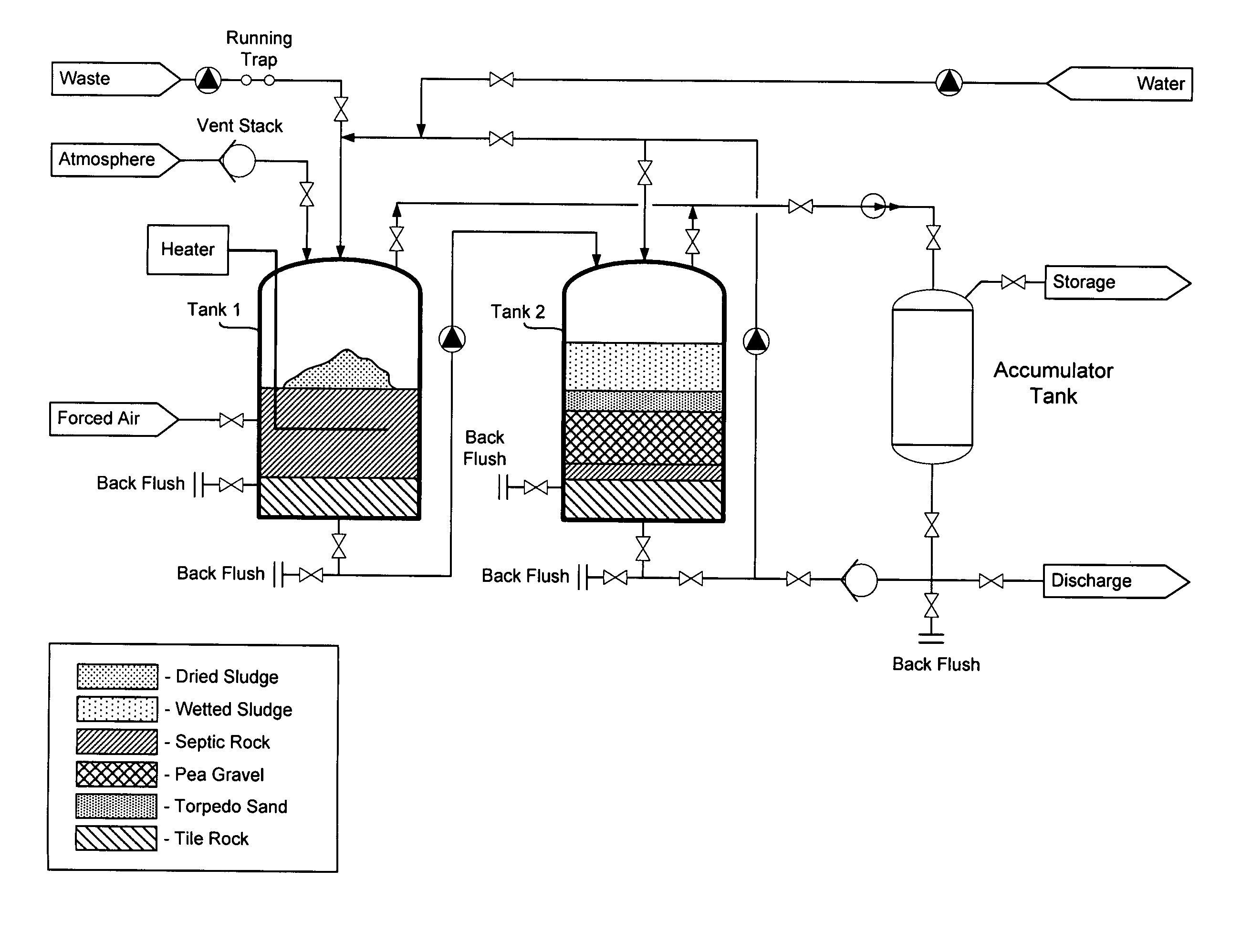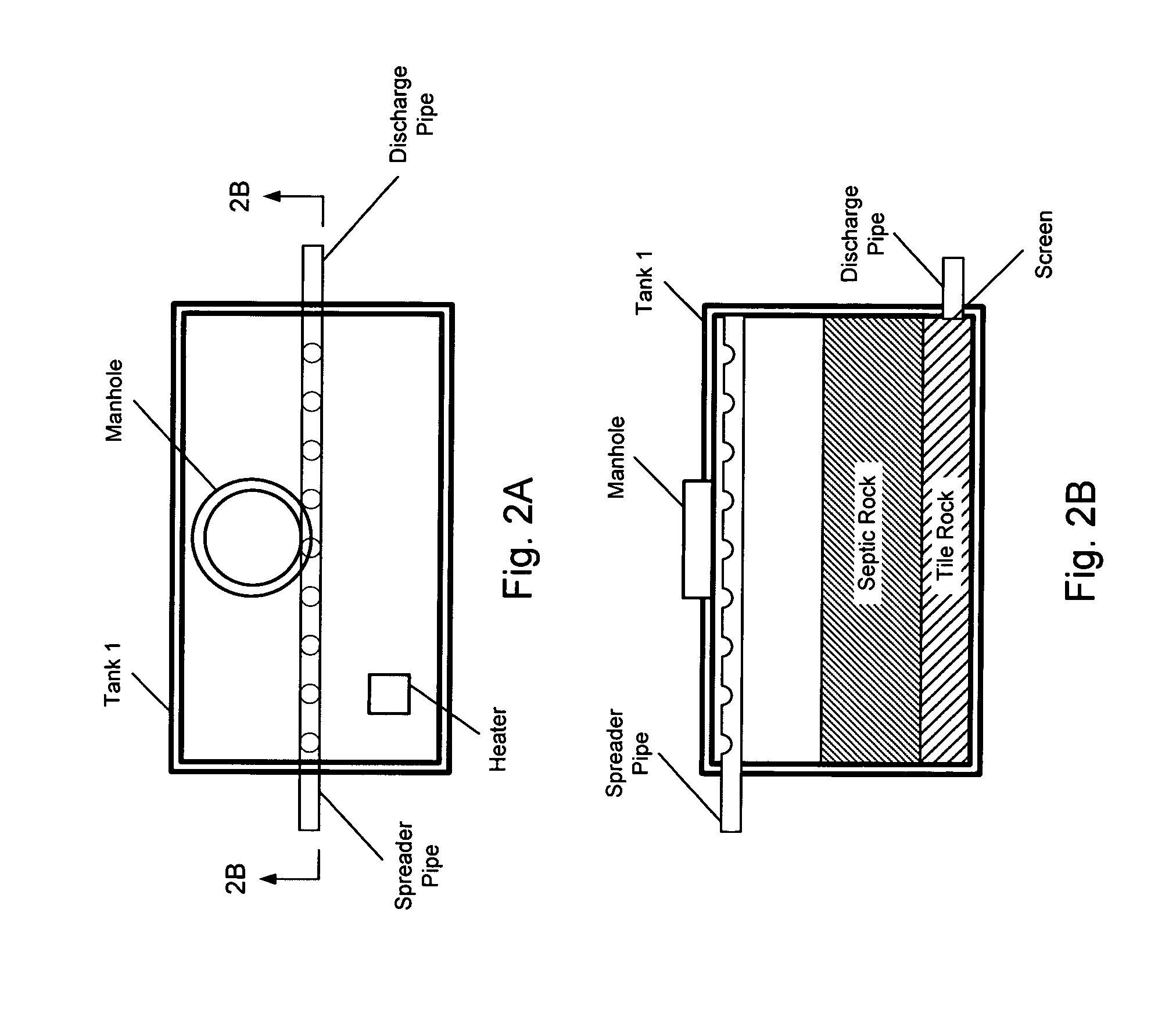Dry cycle anaerobic digester
a digester and dry cycle technology, applied in the field of waste materials or contaminated materials processing, can solve the problems of reducing the processing capacity of total organic materials, reducing the aerobic time cycle, and introducing a large amount of carbon dioxide into the microbial environment, so as to increase the aerobic time cycle and maximize the time intervals , the effect of promoting high digestion rates
- Summary
- Abstract
- Description
- Claims
- Application Information
AI Technical Summary
Benefits of technology
Problems solved by technology
Method used
Image
Examples
Embodiment Construction
[0017]The process is a multiple environment biological process. The natural model of microbial succession is paramount in the operation of the process. In the natural environment, there are rain events and drying events. This causes a natural biological succession where different microbes that are favored by the particular environmental conditions at that time grow and proliferate rapidly. As these microbes begin to flourish and their populations climb they begin to ameliorate their immediate environment, changing the ecological conditions to favor another group of microbes that in turn grow and ameliorate their environment to produce condition favoring the next group of microbes. This produces in a cyclical environment that favors a large diversity of microbes able to perform different tasks in the degradation of organic material. Therefore, all organic material is eventually degraded into carbon dioxide, methane, and water.
[0018]With reference to FIGS. 5 and 6, the procedure for s...
PUM
| Property | Measurement | Unit |
|---|---|---|
| time | aaaaa | aaaaa |
| temperature | aaaaa | aaaaa |
| total organic processing capability | aaaaa | aaaaa |
Abstract
Description
Claims
Application Information
 Login to View More
Login to View More - R&D
- Intellectual Property
- Life Sciences
- Materials
- Tech Scout
- Unparalleled Data Quality
- Higher Quality Content
- 60% Fewer Hallucinations
Browse by: Latest US Patents, China's latest patents, Technical Efficacy Thesaurus, Application Domain, Technology Topic, Popular Technical Reports.
© 2025 PatSnap. All rights reserved.Legal|Privacy policy|Modern Slavery Act Transparency Statement|Sitemap|About US| Contact US: help@patsnap.com



